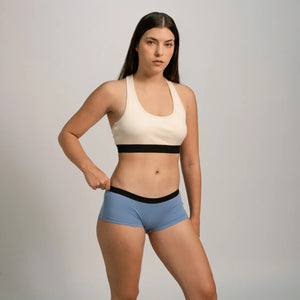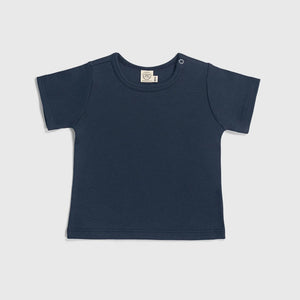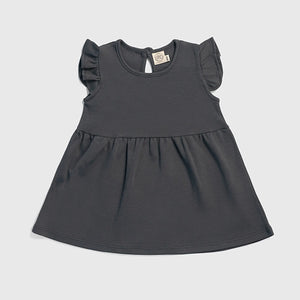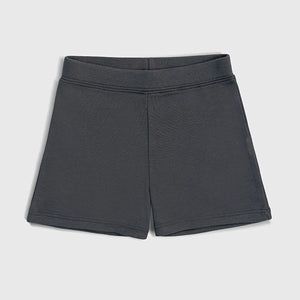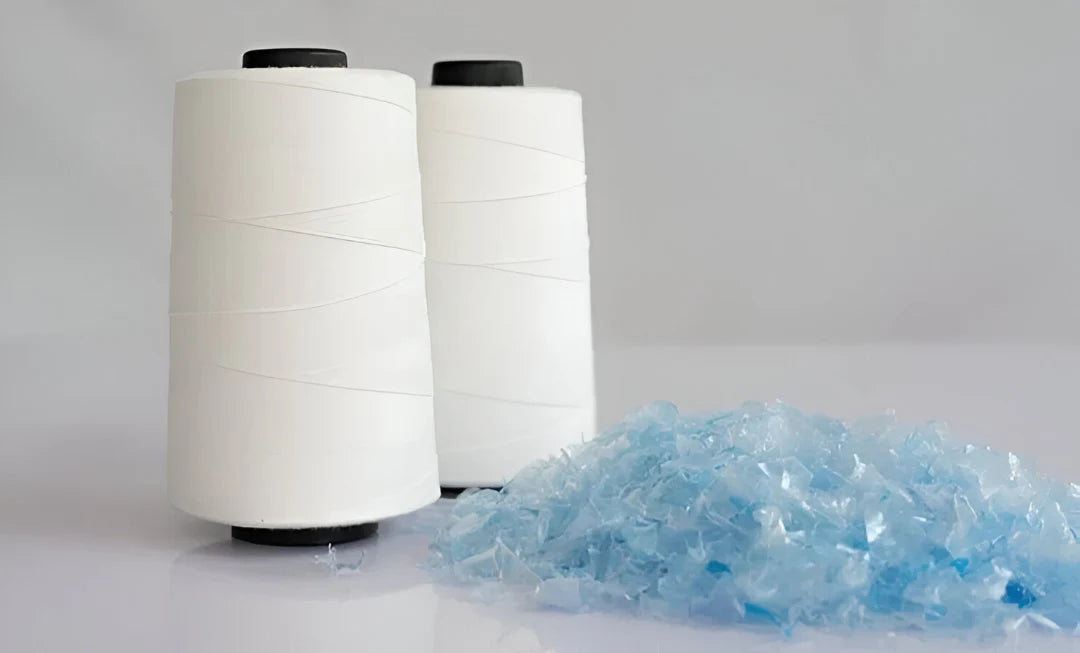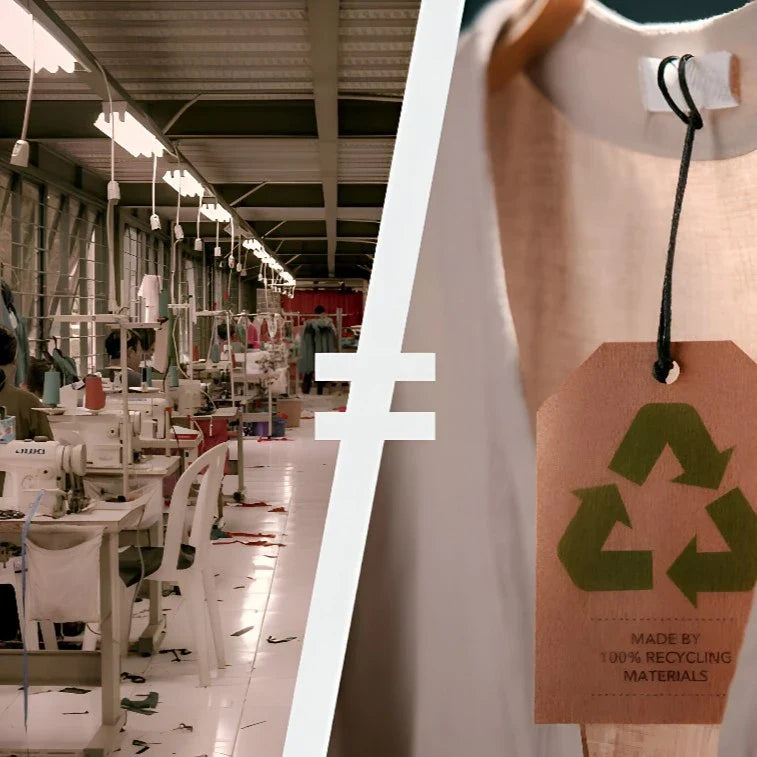Challenges & Insights of Consumerism
On The Textile Industry
.
AYA | FEBRUARY 21, 2025
READING TIME: 7 minutes
By Jordy Munarriz & Lesia Tello
AYA | FEBRUARY 25, 2025
READING TIME: 5 minutes
By Lesia Tello & Jordy Munarriz
Consumerism—the insatiable urge to acquire more than we need—has become a major driving force in the global economy. Nowhere is this more evident than in the textile industry, where the rise of fast fashion has transformed not only how we dress but also how goods are produced and consumed. This article explores the staggering data, recent news, cutting-edge research and current political events, all of which underscore a system that often values immediate profit over long-term sustainability.
Uncontrolled Growth in Fashion
Since the turn of the millennium, clothing consumption has skyrocketed. According to estimates by the World Resources Institute, today's consumers purchase around 60% more garments than they did in 2000 [1].
Fast fashion—a model defined by rapid production cycles and extremely low prices—has democratized access to the latest trends. However, this constant turnover of collections has led to a “wear-and-throw” culture where clothing is used briefly before being discarded. This model not only saturates the market with fleeting products but also fuels a relentless cycle of production and waste that depletes our natural resources. Meanwhile, the United Nations forecasts that, despite efforts to curb waste, the industry's continued expansion will drive a 50% increase in greenhouse gas emissions by 2030 [2]. Additionally, a report by World Resources Institute projects that global apparel production could surge by up to 63% within the same timeframe [1].

By Artem Beliaikin.
A Devastating Environmental Impact
The environmental cost of fast fashion is alarming. The dyeing and finishing processes of textiles generate toxic wastewater, often discharged untreated into nearby rivers and ecosystems, accounting for approximately 20-30% of global industrial water pollution [1,2,3,5].
Furthermore, greenhouse gas emissions from the textile sector are equally concerning. Studies indicate that the fashion industry contributes around 10% of global CO₂ emissions—approximately 2.1 gigatonnes of CO₂ equivalent per year [2,4,6]. Additionally, the International Energy Agency (IEA) has reported that the textile industry is responsible for approximately 2.7% of global energy consumption [7].
Finally, in terms of waste, research shows that more than 60% of all clothing produced ends up in landfills or is incinerated, while less than 1% of textiles are recycled into new fibers [2,5,8,9]. These figures highlight the urgent need to rethink our consumption patterns.
Adding to this grim picture, recent investigations have revealed further environmental malpractice. A report by Earthsight uncovered that major brands like H&M and Zara were marketing cotton products as "ethical" based on misleading certifications, despite evidence linking their supply chains to polluting practices and labor exploitation [10]. Similarly, Greenpeace’s analysis of SHEIN garments found that 15% of the items contained dangerous levels of toxic chemicals that exceeded European regulatory limits—putting both consumer health and the environment at risk [11].
Social and Labor Consequences
Behind every inexpensive garment lies a human cost. The fast fashion model relies heavily on outsourcing production to countries with weak labor regulations, where millions of workers endure long hours, perilously low wages, and unsafe conditions. For instance, the Clean Clothes Campaign has reported that garment workers in Bangladesh earn as little as $68 per month, far below a living wage [9]. The tragic collapse of the Rana Plaza building in Bangladesh—which claimed over 1,100 lives—is a stark reminder of the exploitation underpinning fast fashion [9,12].
Designer Lorenzo Caprile recently analyzed a dress from a prominent fast fashion retailer that cost only 70 euros—including shipping [13]. He argued that if this dress were produced in a country with ethical labor standards, the cost of materials and fair wages would likely push the price close to 700 euros [13]. Such discrepancies expose the deep inequities of a system where cost reduction is achieved by sacrificing both environmental integrity and human rights.

By Zakir Hossain Chowdhury. Source: CNN.
Global Policies and the Trump Administration’s Impact
In response to these challenges, governments and international organizations have implemented policies aimed at mitigating the adverse effects of fast fashion. The United Nations’ Agenda 2030 for Sustainable Development, adopted in 2015, sets ambitious goals for reducing waste and promoting a circular economy [14]. Among its 17 Sustainable Development Goals, responsible consumption and production is paramount, urging industries to minimize their environmental footprints.
In Europe, recent directives demand increased supply chain transparency. For example, the European Commission’s new Directive on Supply Chain Transparency requires companies to disclose detailed information about their production processes and labor conditions, a move that could reduce carbon emissions by up to 15% if implemented effectively [15,16]. A 2020 study published in Resources, Conservation and Recycling noted that better recycling and reuse of textiles could cut textile waste by nearly 30% [16,17].
Across the Atlantic, U.S. policy has also left its mark. Under the actual Trump administration, the “America First” agenda led to the imposition of tariffs on imported textiles—some as high as 25%—aimed at boosting domestic production [18,19,20]. According to a 2021 report by the U.S. International Trade Commission, these tariffs increased U.S. textile production by 12%, although they also raised consumer prices by approximately 8%—the Chinese market being one of the most affected [19,20]. These protectionist measures have sparked debate about the balance between supporting local industries and fostering sustainable global practices [19], because they inadvertently increased production costs throughout the entire supply chain.
On the legislative front, new policy proposals are emerging. For example, the New York Fashion Sustainability and Responsibility Act requires major fashion companies to map at least 50% of their supply chain and disclose sustainability reports, aiming to increase transparency and reduce environmental impacts [22,23]. In Spain, initiatives such as Re-Viste have united major retailers like Zara, Mango, and Primark to comply with Law 7/2022, which mandates efficient management of textile and footwear waste as part of a circular economy [24,26,27]. These efforts illustrate the growing political and corporate commitment to address the environmental fallout of fast fashion.
Changing Demographics and Preferences
The pandemic also highlighted shifting demographics in the fashion market. Younger consumers, particularly Gen Z and Millennials, became increasingly influential in shaping purchasing trends. Research from the Institute for Sustainable Fashion indicates that younger generations are more likely to support sustainable brands, with 83% of Millennials stating they prefer to buy from companies that share their values [7,8].
Moreover, with the rise of remote work, many consumers reported a preference for comfort over style. A study published in the Journal of Fashion Marketing and Management noted that comfort became the primary driver of clothing purchases for many consumers, with 65% prioritizing comfort in their buying decisions [9]. This trend is likely to persist as remote work becomes a more permanent aspect of many industries.

Changing Demographics and Preferences
The pandemic also highlighted shifting demographics in the fashion market. Younger consumers, particularly Gen Z and Millennials, became increasingly influential in shaping purchasing trends. Research from the Institute for Sustainable Fashion indicates that younger generations are more likely to support sustainable brands, with 83% of Millennials stating they prefer to buy from companies that share their values [7,8].
Moreover, with the rise of remote work, many consumers reported a preference for comfort over style. A study published in the Journal of Fashion Marketing and Management noted that comfort became the primary driver of clothing purchases for many consumers, with 65% prioritizing comfort in their buying decisions [9]. This trend is likely to persist as remote work becomes a more permanent aspect of many industries.

Changing Demographics and Preferences
The pandemic also highlighted shifting demographics in the fashion market. Younger consumers, particularly Gen Z and Millennials, became increasingly influential in shaping purchasing trends. Research from the Institute for Sustainable Fashion indicates that younger generations are more likely to support sustainable brands, with 83% of Millennials stating they prefer to buy from companies that share their values [7,8].
Moreover, with the rise of remote work, many consumers reported a preference for comfort over style. A study published in the Journal of Fashion Marketing and Management noted that comfort became the primary driver of clothing purchases for many consumers, with 65% prioritizing comfort in their buying decisions [9]. This trend is likely to persist as remote work becomes a more permanent aspect of many industries.

Changing Demographics and Preferences
The pandemic also highlighted shifting demographics in the fashion market. Younger consumers, particularly Gen Z and Millennials, became increasingly influential in shaping purchasing trends. Research from the Institute for Sustainable Fashion indicates that younger generations are more likely to support sustainable brands, with 83% of Millennials stating they prefer to buy from companies that share their values [7,8].
Moreover, with the rise of remote work, many consumers reported a preference for comfort over style. A study published in the Journal of Fashion Marketing and Management noted that comfort became the primary driver of clothing purchases for many consumers, with 65% prioritizing comfort in their buying decisions [9]. This trend is likely to persist as remote work becomes a more permanent aspect of many industries.


Consumption vs. Sustainability: The Ongoing Debate
At the core of modern fashion culture lies a critical tension: the lure of immediate consumption versus the need for long-term sustainability. The fast fashion model thrives on affordability and constant novelty, compelling consumers to buy new items frequently. Digital platforms—fueled by social media and influencer marketing—amplify this impulse by providing real-time updates on new collections and exclusive deals. Yet, mounting evidence makes it clear that this model is unsustainable.
A study by the French Institute of Fashion found that 68% of consumers have altered their purchasing behavior in response to rising inflation, with many turning to second-hand clothing—a market segment that now accounts for roughly 12% of apparel sales in France [23,27]. Moreover, research indicates that between 2018 and 2023, the proportion of consumers considering the sustainability credentials of the brands they purchase from increased by 5–6% annually [23,28]. This trend shows that more people are becoming aware of the environmental and social costs embedded in the products they buy.
Adding another dimension to this debate, a recent study investigated the impact of pop-up stores—temporary retail space that appears suddenly in a location for a limited period—on consumer behavior. The study found that these temporary retail experiences—ranging from all types of industry or theme, including fashion events—can increase impulse purchases by 20–30% compared to traditional retail outlets, reinforcing a culture of rapid consumption that is at odds with long-term sustainability [29]. In 2020, the turnover of China's pop-up store industry exceeded 80 billion yuan, with approximately 9.6 million pop-up events occurring. Furthermore, in China, 65% of pop-up stores operate for less than 10 days [29]. This business model offers substantial benefits in terms of flexibility and market responsiveness, yet it also encourages overconsumption by capitalizing on the urgency created by temporary availability.
This debate is not merely academic—it has profound implications for our future. Can we continue to prioritize low prices and rapid turnover at the expense of environmental degradation and human rights?

The performance of pop-up stores in China.(Source from Flash Space and RET Reynolds China Commercial Real Estate Research Centre). https://doi.org/10.1038/s41598-024-84528-4
Redefining Consumer Values for a Sustainable Future
The relentless consumerism in the textile industry mirrors a society increasingly detached from the long-term consequences of its actions. Every cheaply made garment represents not just a fleeting trend, but a stark reminder of the environmental depletion and human exploitation at the heart of fast fashion. Global policies and initiatives—ranging from the UN’s 2030 Agenda to the protectionist and/or liberal measures implemented by current governments—offer important steps toward change. Yet, the real transformation depends on our collective willingness to redefine what we value.
Will we continue to pay the steep price of mindless consumerism, or can we forge a future where fashion truly reflects responsibility and ethical integrity?
Glossarykeywords
Circular Economy:
It refers to a production and consumption model that seeks to reduce pollution and waste. It is based on the idea of revaluing materials and products in a circular system.
Clothing Landfills:
They are places where used clothing is disposed of and left to decompose. This can include unsold clothing, clothing that is thrown away, and clothing that is shipped to other countries.
CO2eq:
Carbon dioxide equivalent. Measurement of greenhouse gasses emitted into the atmosphere
Environmental Footprint:
An environmental footprint is a measurement of how human activities impact the planet. It considers how much natural resources are consumed and how much waste is produced, compared to the Earth's capacity to regenerate.
Ethical Labor Standards:
These are guidelines that ensure that workers are treated fairly and have safe working conditions. These standards include freedom of association, safe working conditions, decent wages, no child labour, no discrimination and fair working hours.
Ethical Marketing:
It is a promotional strategy based on values such as honesty, transparency and responsibility. The goal is to generate trust and loyalty with customers.
Ethical Practices:
They are actions that combine values and character to create a positive impact on life.
Fast fashion:
Fast fashion is widely considered to be low-quality apparel produced rapidly to follow current trends in the industry and sold at rock-bottom prices. Although the monetary cost is low, textile workers and the environment are paying a high price.
Greenhouse gas emissions (GHG):
Trap heat and keep the planet warmer than it would be without it.
Greenwashing:
A deceptive marketing practice where brands falsely claim to be environmentally friendly while still engaging in harmful practices.
Outsourcing production:
This refers to when a company hires an outside supplier to produce a product or service. This may include sending raw materials to the supplier or the supplier acquiring its own materials.
Purchasing Behavior:
They are all the attitudes, preferences, intentions and decisions that govern a consumer throughout the process of buying a product or service.
Supply Chain:
It is the set of activities carried out so that a product reaches the customer. It covers everything from obtaining raw materials to the delivery of the final product.
Tariffs On Imported Textiles:
They are taxes imposed by governments on foreign-made textiles and clothing. These taxes are intended to protect domestic industries, generate revenue, and regulate trade.
Toxic Chemicals:
These are substances that can cause harm to the health of people, animals and plants. In the fashion industry, these substances can be found in synthetic dyes, dye fixatives and other synthetic substances that strengthen the properties of garments.
Authors & Researchers

Jordy Munarriz
Environmental Engineer with a master's degree in renewable energy and a specialization in sustainability. Researcher and writer, he combines his technical knowledge with his passion for environmental communication, addressing topics of ecological impact and sustainable solutions in the textile industry and beyond.

Lesia Tello
Biologist and researcher specializing in biochemistry, with a master’s degree in education. Passionate about scientific inquiry, she explores the complexities of life and the processes that sustain it. Her work focuses on the intersection of science, education, and communication, making scientific knowledge accessible and impactful.
Authors & Researchers
Authors & Researchers


Jordy Munarriz
Environmental Engineer with a master's degree in renewable energy and a specialization in sustainability. Researcher and writer, he combines his technical knowledge with his passion for environmental communication, addressing topics of ecological impact and sustainable solutions in the textile industry and beyond.
Lesia Tello
Biologist and researcher specializing in biochemistry, with a master’s degree in education. Passionate about scientific inquiry, she explores the complexities of life and the processes that sustain it. Her work focuses on the intersection of science, education, and communication, making scientific knowledge accessible and impactful.
References:
[1] World Resources Institute. Numbers: The economic, social, and environmental impacts of fast fashion [Internet]. Washington, DC: World Resources Institute; [cited 2025 Feb 21].
[2] United Nations. (April 12, 2019). The Environmental Cost of Being Fashionable.
[3] Ministerio del Medio Ambiente de Chile. Goodbye fast fashion, welcome sustainable fashion [Internet]. Santiago de Chile: MMA; 2023 [cited 2025 Feb 21]. Available from: https://mma.gob.cl/adios-al-fast-fashion-bienvenida-moda-sostenible/
[4] Derechos Humanos y Empresas. Fast fashion: a phenomenon fueling consumer societies [Internet]. 2021 Jul 27
[5] UNESCO. Ethical fashion: a superficial trend or a deep change? [Internet]. 2023 [cited 2025 Feb 21]. Available from: https://www.unesco.org/es/articles/la-moda-etica-tendencia-superficial-o-cambio-profundo-0
[6] U.S. International Trade Commission. Report on the impact of textile tariffs in the U.S. [Internet]. 2021 [cited 2025 Feb 21]. Available from: U.S. International Trade Commission.
[7] International Energy Agency. World Energy Outlook 2023 [Internet]. 2023 [cited 2025 Feb 21]. Available from: https://www.iea.org/reports/world-energy-outlook-2023
[8] The World Resources Institute and the Apparel Impact Institute (2022) Roadmap to Net Zero Report 2021 [Internet] Washington. 2022 Jan. [cited 2024 Sep 21]. Available from: https://apparelimpact.org/resources/roadmap-to-net-zero-report-2021/
[9] Clean Clothes Campaign. (2021). Living Wages in the Global Garment Industry.
[10] Earthsight. Greenwashing allegations: ethical certifications in question for H&M and Zara [Internet]. 2023 [cited 2025 Feb 21]. Available from: https://www.earthsight.org.uk/fashion-crimes
[11] Earthsight. Taking the shine off Shein: hazardous chemicals in Shein products break EU regulations, new report finds [Internet]. 2023 [cited 2025 Feb 21]. Available from: https://www.greenpeace.org/international/press-release/56979/taking-the-shine-off-shein-hazardous-chemicals-in-shein-products-break-eu-regulations-new-report-finds/
[12] International Labour Organization. Rana Plaza: Bangladesh’s garment sector [Internet]. 2024 [cited 2025 Feb 21]. Available from: https://webapps.ilo.org/infostories/en-GB/Stories/Country-Focus/rana-plaza#bangladeshi-garment-sector
[13] AS. A designer analyzes a Shein dress, and his analysis surprises everyone: "How much did it cost you?" [Internet]. 2024 [cited 2025 Feb 21]. Available from: https://as.com/tikitakas/estilo/un-disenador-analiza-un-vestido-de-shein-y-su-analisis-sorprende-a-todos-cuanto-os-ha-costado-n/
[14] United Nations. Sustainable Development Goals [Internet]. 2025 [cited 2025 Feb 21]. Available from: https://www.un.org/sustainabledevelopment/
[15] TraceX Technologies. Global regulatory frameworks [Internet]. 2024 [cited 2025 Feb 21]. Available from: https://tracextech.com/global-regulatory-frameworks/
[16] Sedex. Why manufacturers can’t ignore the shift to sustainable and responsible sourcing [Internet]. 2024 [cited 2025 Feb 21]. Available from: https://www.sedex.com/blog/why-manufacturers-cant-ignore-the-shift-to-sustainable-and-responsible-sourcing/
[17] Ellen MacArthur Foundation. A new textiles economy [Internet]. 2017
[18] Ahmed S, Hasan MM, Hossain AT, Saadi S. The comeback effect: Market responses to Trump's 2024 election victory. Econ Lett [Internet]. Available from: https://doi.org/10.1016/j.econlet.2025.112170.
[19] Tax Foundation. Trump tariffs and the trade war [Internet]. 2024 [cited 2025 Feb 21]. Available from: https://taxfoundation.org/research/all/federal/trump-tariffs-trade-war/
[20] New York State Senate. Senate Bill S4746B: An Act to Amend the Environmental Conservation Law [Internet]. 2023
[21] U.S. International Trade Commission. Trade shifts 2021: textiles [Internet]. 2021 [cited 2025 Feb 21]. Available from: https://www.usitc.gov/research_and_analysis/tradeshifts/2021/textiles
[22] McKinsey & Company. Sustainable style: How fashion can afford and accelerate decarbonization [Internet]. 2024 Mar 28 [cited 2025 Feb 21]. Available from: https://www.mckinsey.com/industries/retail/our-insights/sustainable-style-how-fashion-can-afford-and-accelerate-decarbonization
[23] McKinsey & Company. State of Fashion 2024 [Internet]. 2024 [cited 2025 Feb 21]. Available from: https://www.mckinsey.com/industries/retail/our-insights/state-of-fashion-2024
[24] Huffington Post Español. Re-Viste in Spain: Major Brands Unite to Tackle Textile Waste Under Law 7/2022 [Internet]. 2023
[25] Sedex.com. New York Fashion Sustainability and Responsibility Act Proposal [Internet]. 2023
[26] Compliance & Risks. Fashion brands engage in textiles waste collection pilot in Spain – Re-Viste [Internet]. 2024
[27] FashionUnited. IFM Paris: The trends that will shape fashion in 2025 [Internet]. FashionUnited; 2025 Feb 17
[28] Statista. Global shift to buying sustainable products [Internet]. Statista; [cited 2025 Feb 20]. Available from: https://www.statista.com/statistics/1377869/global-shift-to-buying-sustainable-products/
[29] Wu D, Ren Z, Lei H, Zhao S. Life cycle assessment of a luxury fashion brand’s HPP event booth in the context of circular economy. Sci Rep [Internet]. 2025 Feb 12;15:5153. Available from: https://doi.org/10.1038/s41598-024-84528-4
Glossarykeywords
Circular Economy:
It refers to a production and consumption model that seeks to reduce pollution and waste. It is based on the idea of revaluing materials and products in a circular system.
CO2eq:
Carbon dioxide equivalent. Measurement of greenhouse gasses emitted into the atmosphere
Ethical Labor Standards:
These are guidelines that ensure that workers are treated fairly and have safe working conditions. These standards include freedom of association, safe working conditions, decent wages, no child labour, no discrimination and fair working hours.
Fast fashion:
Fast fashion is widely considered to be low-quality apparel produced rapidly to follow current trends in the industry and sold at rock-bottom prices. Although the monetary cost is low, textile workers and the environment are paying a high price.
Outsourcing production:
This refers to when a company hires an outside supplier to produce a product or service. This may include sending raw materials to the supplier or the supplier acquiring its own materials.
Tariffs On Imported Textiles:
They are taxes imposed by governments on foreign-made textiles and clothing. These taxes are intended to protect domestic industries, generate revenue, and regulate trade.
Toxic Chemicals:
These are substances that can cause harm to the health of people, animals and plants. In the fashion industry, these substances can be found in synthetic dyes, dye fixatives and other synthetic substances that strengthen the properties of garments.
References:
[1] World Resources Institute. Numbers: The economic, social, and environmental impacts of fast fashion [Internet]. Washington, DC: World Resources Institute; [cited 2025 Feb 21].
[2] United Nations. (April 12, 2019). The Environmental Cost of Being Fashionable.
[3] Ministerio del Medio Ambiente de Chile. Goodbye fast fashion, welcome sustainable fashion [Internet]. Santiago de Chile: MMA; 2023 [cited 2025 Feb 21]. Available from: https://mma.gob.cl/adios-al-fast-fashion-bienvenida-moda-sostenible/
[4] Derechos Humanos y Empresas. Fast fashion: a phenomenon fueling consumer societies [Internet]. 2021 Jul 27
[5] UNESCO. Ethical fashion: a superficial trend or a deep change? [Internet]. 2023 [cited 2025 Feb 21]. Available from: https://www.unesco.org/es/articles/la-moda-etica-tendencia-superficial-o-cambio-profundo-0
[6] U.S. International Trade Commission. Report on the impact of textile tariffs in the U.S. [Internet]. 2021 [cited 2025 Feb 21]. Available from: U.S. International Trade Commission.
[7] International Energy Agency. World Energy Outlook 2023 [Internet]. 2023 [cited 2025 Feb 21]. Available from: https://www.iea.org/reports/world-energy-outlook-2023
[8] The World Resources Institute and the Apparel Impact Institute (2022) Roadmap to Net Zero Report 2021 [Internet] Washington. 2022 Jan. [cited 2024 Sep 21]. Available from: https://apparelimpact.org/resources/roadmap-to-net-zero-report-2021/
[9] Clean Clothes Campaign. (2021). Living Wages in the Global Garment Industry.
[10] Earthsight. Greenwashing allegations: ethical certifications in question for H&M and Zara [Internet]. 2023 [cited 2025 Feb 21]. Available from: https://www.earthsight.org.uk/fashion-crimes
[11] Earthsight. Taking the shine off Shein: hazardous chemicals in Shein products break EU regulations, new report finds [Internet]. 2023 [cited 2025 Feb 21]. Available from: https://www.greenpeace.org/international/press-release/56979/taking-the-shine-off-shein-hazardous-chemicals-in-shein-products-break-eu-regulations-new-report-finds/
[12] International Labour Organization. Rana Plaza: Bangladesh’s garment sector [Internet]. 2024 [cited 2025 Feb 21]. Available from: https://webapps.ilo.org/infostories/en-GB/Stories/Country-Focus/rana-plaza#bangladeshi-garment-sector
[13] AS. A designer analyzes a Shein dress, and his analysis surprises everyone: "How much did it cost you?" [Internet]. 2024 [cited 2025 Feb 21]. Available from: https://as.com/tikitakas/estilo/un-disenador-analiza-un-vestido-de-shein-y-su-analisis-sorprende-a-todos-cuanto-os-ha-costado-n/
[14] United Nations. Sustainable Development Goals [Internet]. 2025 [cited 2025 Feb 21]. Available from: https://www.un.org/sustainabledevelopment/
[15] TraceX Technologies. Global regulatory frameworks [Internet]. 2024 [cited 2025 Feb 21]. Available from: https://tracextech.com/global-regulatory-frameworks/
[16] Sedex. Why manufacturers can’t ignore the shift to sustainable and responsible sourcing [Internet]. 2024 [cited 2025 Feb 21]. Available from: https://www.sedex.com/blog/why-manufacturers-cant-ignore-the-shift-to-sustainable-and-responsible-sourcing/
[17] Ellen MacArthur Foundation. A new textiles economy [Internet]. 2017
[18] Ahmed S, Hasan MM, Hossain AT, Saadi S. The comeback effect: Market responses to Trump's 2024 election victory. Econ Lett [Internet]. 2025 Feb;247:112170. Available from: https://doi.org/10.1016/j.econlet.2025.112170.
[19] Tax Foundation. Trump tariffs and the trade war [Internet]. 2024 [cited 2025 Feb 21]. Available from: https://taxfoundation.org/research/all/federal/trump-tariffs-trade-war/
[20] New York State Senate. Senate Bill S4746B: An Act to Amend the Environmental Conservation Law [Internet]. 2023
[21] U.S. International Trade Commission. Trade shifts 2021: textiles [Internet]. 2021 [cited 2025 Feb 21]. Available from: https://www.usitc.gov/research_and_analysis/tradeshifts/2021/textiles
[22] McKinsey & Company. Sustainable style: How fashion can afford and accelerate decarbonization [Internet]. 2024 Mar 28 [cited 2025 Feb 21]. Available from: https://www.mckinsey.com/industries/retail/our-insights/sustainable-style-how-fashion-can-afford-and-accelerate-decarbonization
[23] McKinsey & Company. State of Fashion 2024 [Internet]. 2024 [cited 2025 Feb 21]. Available from: https://www.mckinsey.com/industries/retail/our-insights/state-of-fashion-2024
[24] Huffington Post Español. Re-Viste in Spain: Major Brands Unite to Tackle Textile Waste Under Law 7/2022 [Internet]. 2023 [cited 2025 Feb 21].
[25] Sedex.com. New York Fashion Sustainability and Responsibility Act Proposal [Internet]. 2023 [cited 2025 Feb 21].
[26] Compliance & Risks. Fashion brands engage in textiles waste collection pilot in Spain – Re-Viste [Internet]. 2024 [cited 2025 Feb 21].
[27] FashionUnited. IFM Paris: The trends that will shape fashion in 2025 [Internet]. FashionUnited; 2025 Feb 17 [cited 2025 Feb 21].
[28] Statista. Global shift to buying sustainable products [Internet]. Statista; [cited 2025 Feb 20]. Available from: https://www.statista.com/statistics/1377869/global-shift-to-buying-sustainable-products/
[29] Wu D, Ren Z, Lei H, Zhao S. Life cycle assessment of a luxury fashion brand’s HPP event booth in the context of circular economy. Sci Rep [Internet]. 2025 Feb 12;15:5153. Available from: https://doi.org/10.1038/s41598-024-84528-4
You don't have to put all the weight on your shoulders. Every action counts. At AYA, we fight microplastic pollution by making a 100% plastic-free catalog.
Visit Our Shop →You May Also Like to Read...
The Truth About Recycled Polyester in Fashion
Discover the hidden costs of recycled polyester. Learn why rPET isn't as sustainable as it seems and what real circular alternatives look like.
Synthetic Fabrics vs. Organic Cotton: Impact on Skin Health
Discover how polyester and other synthetic fabrics can irritate your skin and why organic cotton, especially Pima cotton, is a healthier and safer choice for sensitive skin.
What Peru Whispers: Organic Pima Cotton Grown with Tradition and Care
In the quiet corners of Peru, organic pima cotton is grown with respect for the land. A luxurious, timeless textile waiting to be discovered.
Why Sustainable Fashion Shouldn’t Be Fast Fashion
Recycled materials and green labels won’t fix fast fashion. Discover why real sustainability means slowing down.
